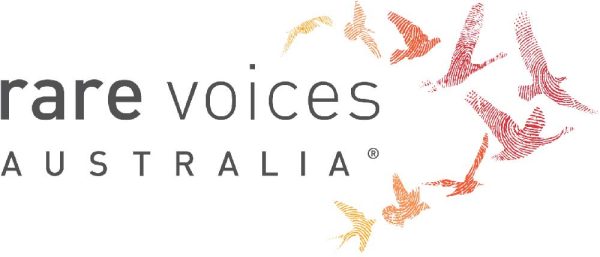Heritable connective tissue disorders (HCTDs) (Group of conditions)
Quick Search
- Summary
- Synonyms and Classifications
- Symptoms
- Disability Impacts
- Cause and Inheritance
- Diagnosis
- Treatment
- Clinical Care Team
- Clinical Care Guidelines
- Emergency Management
- Research
- Rare Disease Organisation(s)
- Lived Experience
- Support Services and Resources
- Mental Health
- Other Information
- Useful Links for Healthcare Professionals
Summary
Heritable connective tissue disorders (HCTDs) are a group of inherited genetic conditions that affect connective tissues. Connective tissues are an important part of every organ system1 and help to join and support other tissues in the body.2 There are many different types of connective tissues, which contribute to various body functions.2,3 HCTDs can affect many organ systems, resulting in a wide range of symptoms that can vary between individuals and make it difficult to diagnose.1 Early diagnosis and appropriate management can help reduce the severity of the condition and further complications. HCTDs can affect children and adults.
The different types of HCTD include:
- Congenital contractural arachnodactyly (Beals syndrome)
- Ehlers-Danlos syndromes (EDS) (Group of Conditions)
- Loeys-Dietz syndrome
- Marfan syndrome
- Stickler syndrome
Individual pages for these specific HCTDs will be added to the RARE Portal over time.
Synonyms and Classifications
There are no known synonyms.
Universal rare disease classifications provide a common language for recording, reporting and monitoring diseases. Please visit the Rare Disease Classifications page for more information about these internationally recognised classifications.
There is no ORPHAcode and ICD:11 classification.
Symptoms
There are a wide range of symptoms associated with heritable connective tissue disorders (HCTDs).1 Symptoms vary between the type of HCTD and between individuals.
Common features of HCTDs include joints that are very flexible and have an abnormally large range of movement (joint hypermobility), skin that can stretch beyond the normal range (skin hyperextensibility) and tissue that is fragile.4 Individual with HCTDs also commonly experience pain and fatigue.4,5 There are also reports of gastrointestinal issues and cardiovascular complications.4,6
Specific symptoms for a type of HCTD may be found on the individual pages on the RARE Portal.
Please speak to your medical team to learn more about the symptoms for a specific type of HCTD.
Disability Impacts
Rare diseases are often serious and progressive, exhibiting a high degree of symptom complexity, leading to significant disability. Majority of the estimated two million Australians living with a rare disease meet the Australian Government’s definition for disability (in accordance to the Australian Public Service Commission and Australian Bureau of Statistics), and many experience severe and permanent disability impacts. If you or someone you care for is experiencing disability-related impacts from a rare condition, please speak with a health or disability professional for advice. Information about relevant disability support can be found at the RARE Portal’s Disability Support Information page.
Cause and Inheritance
HCTDs are genetic conditions and can be passed on from parent to child (inherited), however the genetic cause for some types of HCTD are currently still unknown.1
Please visit the individual pages on the RARE Portal and speak to your medical team to learn more about the cause for a specific type of HCTD.
If you would like to learn more about the inheritance and impact of this condition, please ask your doctor for a referral to a genetic counsellor. Genetic counsellors are qualified allied health professionals who can provide information and support regarding genetic conditions and testing. More information about genetic counselling can be found at:
- Information on Genetic Services
- The National and State Services pages underneath the ‘Genetic Counselling’ sections listed
Diagnosis
Diagnosis of HCTDs may be made based on clinical examination according to established clinical criteria, family history and genetic testing if a genetic diagnostic test is available.1
For some types of HCTD, the genetic cause is not yet known, hence there is no genetic diagnostic test available.
Please speak to your medical team to learn more about the available diagnostic pathways for a specific type of HCTD.
Treatment
There is currently no curative treatment for HCTDs. Treatment is targeted at managing symptoms (symptomatic management) and involves a multidisciplinary care team. This may include pain management, physiotherapy, occupational therapy, and use of aids and orthotics.4 Regular monitoring of multiple organ systems is vital to enable early detection and treatment of symptoms and complications.1 Management of HCTDs is often lifelong.
Please speak to your medical team to learn more about the possible treatment or management options for your condition. Treatment will depend on an individual’s specific condition and symptoms. It is also important to stay connected to your medical team so that you can be made aware of any upcoming clinical trial opportunities.
Clinical Care Team
Clinical care for rare diseases often involves a multidisciplinary team of medical, care and support professionals. Please note that the information provided here is as a guide and that RVA does not necessarily monitor or endorse specific clinics or health experts.
Healthcare professionals involved in the treatment of HCTDs may include general practitioners (GP), paediatricians, geneticists, rheumatologists, orthopaedists, neurologists, cardiologists, cardiovascular surgeons, ophthalmologists, physiotherapists, occupational therapists and psychologists.1 The need for different healthcare professionals may change over a person’s lifetime and extend beyond those listed here.
Clinical Care Guidelines
We are not aware of any clinical care guidelines for HCTDs in Australia. If you know of any relevant care guidelines, please let us know via the Contribute page.
National Academies of Sciences, Engineering, and Medicine: Selected Heritable Disorders of Connective Tissue and Disability (Consensus Study Report) was prepared by an expert committee, convened by the United States National Academies of Sciences, Engineering, and Medicine, to provide current information regarding the diagnosis, treatment, and prognosis of selected HCTDs.
Emergency Management
Individuals living with rare diseases may have complex medical issues and disabilities, which are not always visible. It is often useful to refer to their medical history as well as personal information such as a medical card, doctor’s letter, or if available, a rare disease passport, for relevant information.
It may be important to consider the following when managing individuals living with HCTDs at emergency departments/services:
- HCTDs often affects multiple organ systems.1 Individuals with HCTDs can present with a wide range of symptoms and complications and may have other comorbidities that may need to be taken into consideration.
Individual pages for the specific HCTDs will be added to the RARE Portal in time and may contain more information on emergency management for specific HCTDs.
Research
There are specific considerations around participating in rare disease research, including clinical trials. It is important to be mindful of issues such as data privacy, research ethics, consent and differences in research regulations between Australia and other countries.
If you are interested in finding clinical trials for your condition, please visit the following websites; however, there may not be any clinical trials available:
It is best to discuss your interest in any clinical trials with your medical team to determine suitability and eligibility.
Please note that RVA does not necessarily monitor or endorse each group/organisation’s operational governance and activities.
Rare Disease Organisation(s)
Australian Organisation:
Connective Tissue Disorders Network Australia (CTDNA)
Website: https://ctdna.org.au/
Connective Tissue Disorders Network Australia (CTDNA) is the collaborative effort of people both living with, and / or caring for those with HCTD. Individuals are often both; a patient, and a carer. CTDNA seeks to establish a national network of lived experience advocates, healthcare professionals and researchers with an interest in HCTD – a network of like-minded individuals coming together to better the care and management of Australians impacted by HCTD.
Please note that RVA does not monitor or endorse each group/organisation’s operational governance and activities. When engaging with a group, please consider the information on the RARE Portal’s Finding Helpful Peer and Community Supports page.
Lived Experience
HCTDs vary between individuals, and each person’s experience is unique.
If you would like to share your personal story with RVA, please visit the Rare Voices Australia: Share Your Story page. RVA will consider your story for publishing on our website and inclusion on the RARE Portal.
Support Services and Resources
For information on available government and social services that provide support for individuals with a rare disease, please visit the National and State Services pages.
Mental Health
People living with a rare disease, including families and carers, often face unique challenges such as diagnostic delays, misdiagnoses, limited treatment options, and limited access to rare disease specialists and support. These challenges may impact people’s emotional wellbeing and quality of life. Many people find it helpful to seek mental health and wellbeing support to cope with ongoing stress and uncertainty. Connecting with people who have shared experiences through a support group may also be helpful. Information about relevant mental health and wellbeing support can be found at:
- Mental Health and Wellbeing Support for Australians Living with a Rare Disease
- The National and State Services pages underneath the ‘Mental Health’ sections listed
Other Information
Further information on HCTDs can be found at:
Useful Links for Healthcare Professionals
References
- National Academies of Sciences, Engineering, and Medicine; Health and Medicine Division; Board on Health Care Services; Committee on Selected Heritable Disorders of Connective Tissue and Disability [Internet]. Washington (DC): National Academies Press (US). 2002. Accessed 19 June 2024. https://www.ncbi.nlm.nih.gov/books/NBK584974
- Kamrani P, Marston G, Arbor TC, et al. Anatomy, Connective Tissue. Updated 5 March 2023. In: StatsPearl [Internet]. Treasure Island (FL): StatPearls Publishing. 2024-Jan. Accessed 20 June 2024. https://www.ncbi.nlm.nih.gov/books/NBK538534/
- Malfait F, Forlino A, Sengle G. Editorial: Molecular mechanisms of heritable connective tissue disorders. Front. Genet. 2022; 13. https://doi.org/10.3389/fgene.2022.866665
- Kazkaz H, Grahame R. The rheumatological heritable disorders of connective tissue. Medicine. 2022;50(3): 189-193. https://doi.org/10.1016/j.mpmed.2021.12.010
- Warnink-Kavelaars J, de Koning LE, Rombaut L, et al. Heritable Connective Tissue Disorders in Childhood: Increased Fatigue, Pain, Disability and Decreased General Health. Genes 2021;12(6):831. https://doi.org/10.3390/genes12060831
- Yagyu T, Noguchi T. Diagnosis and treatment of cardiovascular disease in patients with heritable connective tissue disorders or heritable thoracic aortic diseases. Cardiovasc. Interv. and Ther. 2024; 39, 126–136. https://doi.org/10.1007/s12928-023-00977-0
Contributors
This page has been co-developed by Rare Voices Australia (RVA)’s RARE Portal team in consultation with Connective Tissue Disorders Network Australia (CTDNA).
If you are aware of any additional information that may benefit stakeholders with an interest in this page, or if you notice any broken links or inaccurate information, please let us know via the Contribute page.

